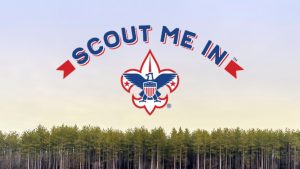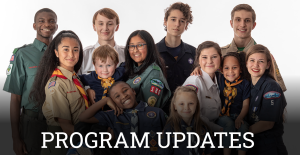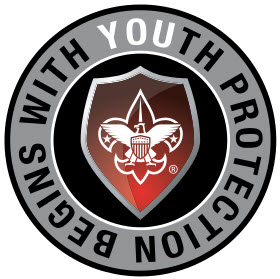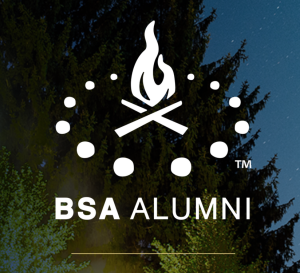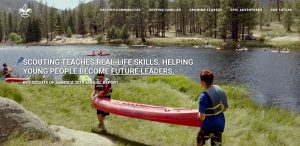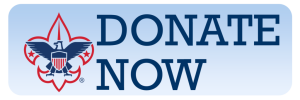Scouting Safely
Ever Alert / Ever Safe
Youth Protection and Safety have long been a focus of Scouting America. Nothing’s more important in Scouting. Helping units enhance Safety is the primary focus of Ever Alert/Ever Safe.
Safe Scout and Unit Safety Training Video
The Ever Alert / Ever Safe tool kit:
Other useful information
- Ever Safe/ Ever Alert Checklist
- Medical Forms
- Scouter Code of Conduct
- Scouting Safety from National
- Training Resources
- Virtual Meeting Safety
- Youth Protection (for adults)
- Youth Protection (for youth)
Scouting America‘s Commitment to Safety is ongoing and we want you to know that the safety of our youth, volunteers, staff, and employees cannot be compromised. Scouting America puts the utmost importance on the safe and healthy environments for its youth membership. The territory takes great strides to ensure the safety of its youth as well as the adult volunteer leadership that interacts with them.
Health and safety must be integrated into everything we do, to the point that no injuries are acceptable beyond those that are readily treatable by Scout-rendered first aid.
The Scouting program, as contained in our handbooks and literature, integrates many safety features. However, no policy or procedure will replace the review and vigilance of trusted adults and leaders at the point of program execution.
Update To The Guide To Safe Scouting – Sept 2023
(Effective September 1, 2023)
All adults staying overnight in connection with a Scouting activity must be currently registered in an adult fee required position as listed or as an adult program participant. Limited exception below for Cub Scout overnight Programs.
See FAQ for list of adult fee required positions. Registration as a Merit Badge Counselor does not meet this requirement.
Cub Scout Programs – Overnight Exception: Cub Scout parents or legal guardians taking part in an overnight Cub Scout program with their own child or legal ward are not required to register as leaders. All adults must review the “How to Protect your Children from Child Abuse: A Parent’s Guide” that can be found in the front of each Cub Scout Handbook. In addition, the parent or legal guardian must be accompanied by a registered leader at any time they are with youth members other than their own child/ward. All other overnight adults must be currently registered in an adult fee required position.
Language change –
- Cub Scout pack unit coordinated camping is limited to no more than two consecutive nights.
Safety Moments
Safety Moments are exactly what the name implies. They are opportunities to prepare for a Scouting activity, review safety measures, or report incidents correctly. They keep Safety front of mind. An easy way to continually remind youth and adults to think about the possibility of injury, equipment damage, or preparation if something bad occurs.
Tools to plan events and camp outs
Campout safety checklist provides guidance on safety issues that you may encounter at a Scouting campout. Along with the Guide to Safe Scouting and the tour and activity plan, this tool will help you in having conversations on identifying risks that need to be mitigated or eliminated.
Event safety checklist provides guidance on safety issues that you may encounter at a Scouting event (usually District/Council run) . This is a tool, not a list of mandatory guidelines. The intent of the checklist is to create conversations among event organizers around risks and ways to mitigate or eliminate them.
Safe Transportation checklist The safety of our Scouts, volunteers, employees, and communities
is our top priority. This two-part SAFE Transportation Checklist and Pre-Trip Transporting Inspection is designed to help you manage the risks associated with transporting Scouts.
Digital Safety
- Securing Virtual Meetings
- Virtual Meeting Protection Guidelines and Safety Tips from CST10
- National Youth Protection Guidelines -Digital and Online Safety
- Scouting At Home Resources from National
Incident Reporting
A key responsibility that all volunteers and professional staff share is providing an effective program that meets the needs of young people and provides the proper health and safety of everyone concerned. It is important that we sustain the safe operation of our programs and promote continuous improvement through organizational learning. Timely and complete incident reports support analysis that is critical to identifying needed improvement of the programs offered by Scouting America.
Youth Protection Training
Youth Protection Training (YPT) is designed to help you keep youth safe from abuse. During YPT, participants learn Scouting America’s Youth Protection Guidelines, signs of abuse, and how to report suspected abuse. After each section of material, participants will answer questions about that section’s topic. This course must be completed by all registered adults, and is highly recommended for parents and other adults working with youth.
Scouts First Helpline
The protection of youth is the primary obligation of every individual involved in the Scouting America – including leaders, parents, members and professionals. Scouting America has been and will continue to be vigilant in its efforts to create barriers that help prevent abuse and to recognize and report child abuse regardless of where it occurs.
As part of the Scouting America’s “Scouts First” approach to the protection and safety of youth, Scouting America has established 1-844-SCOUTS1 (844-726-8871) , a dedicated 24-hour helpline to receive reports of known or suspected abuse or behavior that might put a youth at risk.
The helpline’s goal is to provide immediate assistance to ensure that the victim, unit, and council are fully supported and the actions taken are properly documented. Minor, non-recurring infractions with no indication youth are at risk can still be addressed at the unit or council level.
State Child Abuse and Neglect Reporting Numbers – Search for your state reporting numbers.
Other Youth Protection Resources
Safety PAUSE
The Safety PAUSE process stresses the importance of a last-minute safety check in the field. By encouraging each Scout or adult leader to pause and reflect on the tasks at hand just before beginning, you have an opportunity to take necessary precautions to prevent any present or potential hazards. This is not a standalone tool. A formal risk assessment should be done first, such as a safety checklist or a program hazard analysis (PHA).
Other Resources
- Scouting Safely Scouting America’s Commitment to Safety, the main page for all Health and safety information.
- Safety Moments Safety Moments are exactly what the name implies: opportunities to prepare for an activity, review safety measures, and report incidents correctly. Topics of this new series include incident reporting helps, safe use of medication in Scouting, weather-related safety, winter activity, and winter sports.
- Information about the Annual Health and safety forms
- Health and Safety Forms Not annual health forms <see above>
- National Camp Accreditation Program
- The Scouting America Outdoor Program
- Tick Safety Information
Important Contacts
| CST10 Contacts | ||||||||
|---|---|---|---|---|---|---|---|---|
| Safeguarding Youth | Cheryl Izyk | cdizyk@comcast.net | 413-552-9148 | |||||
| Safety | Don Ghee | matbuff@yahoo.com | 646-483-5900 | |||||
-Robert Baden-Powell





